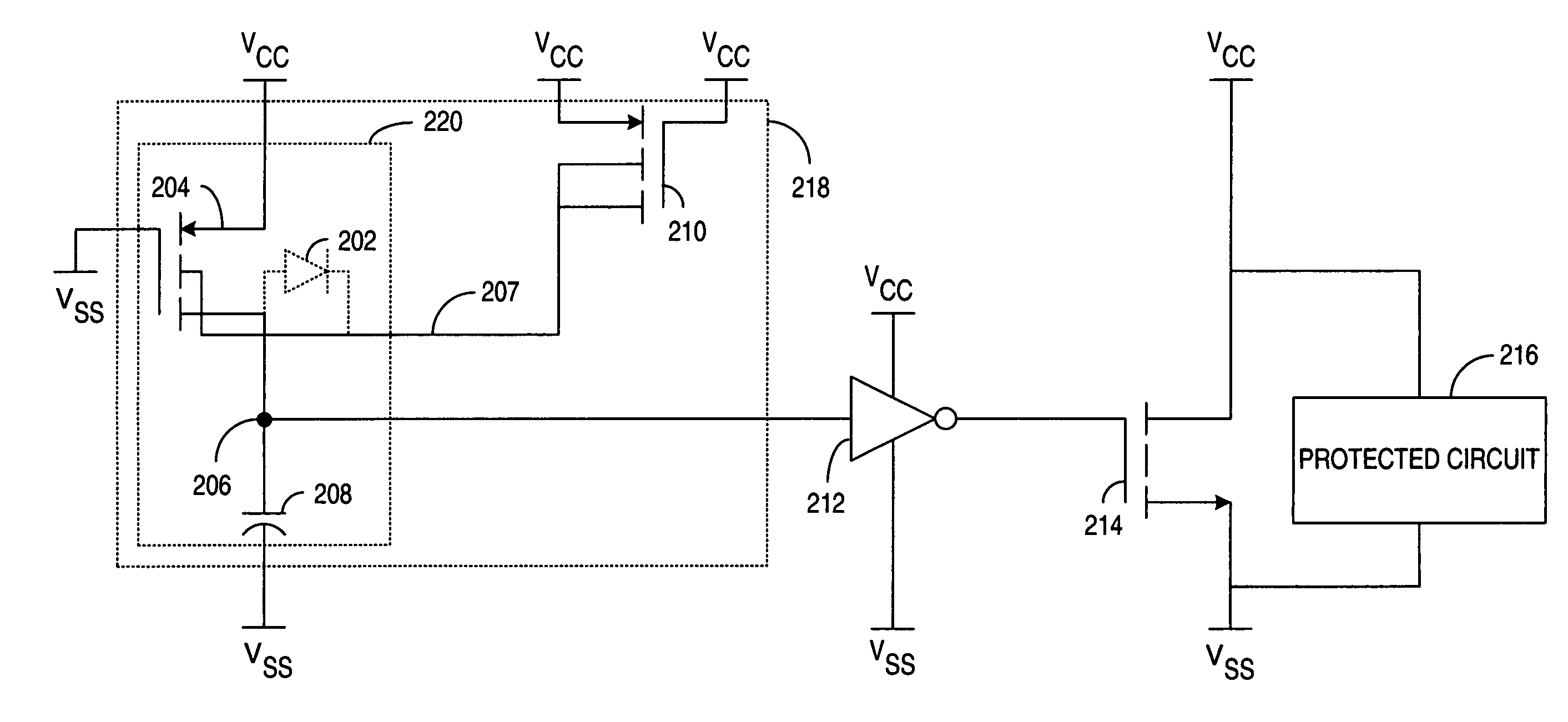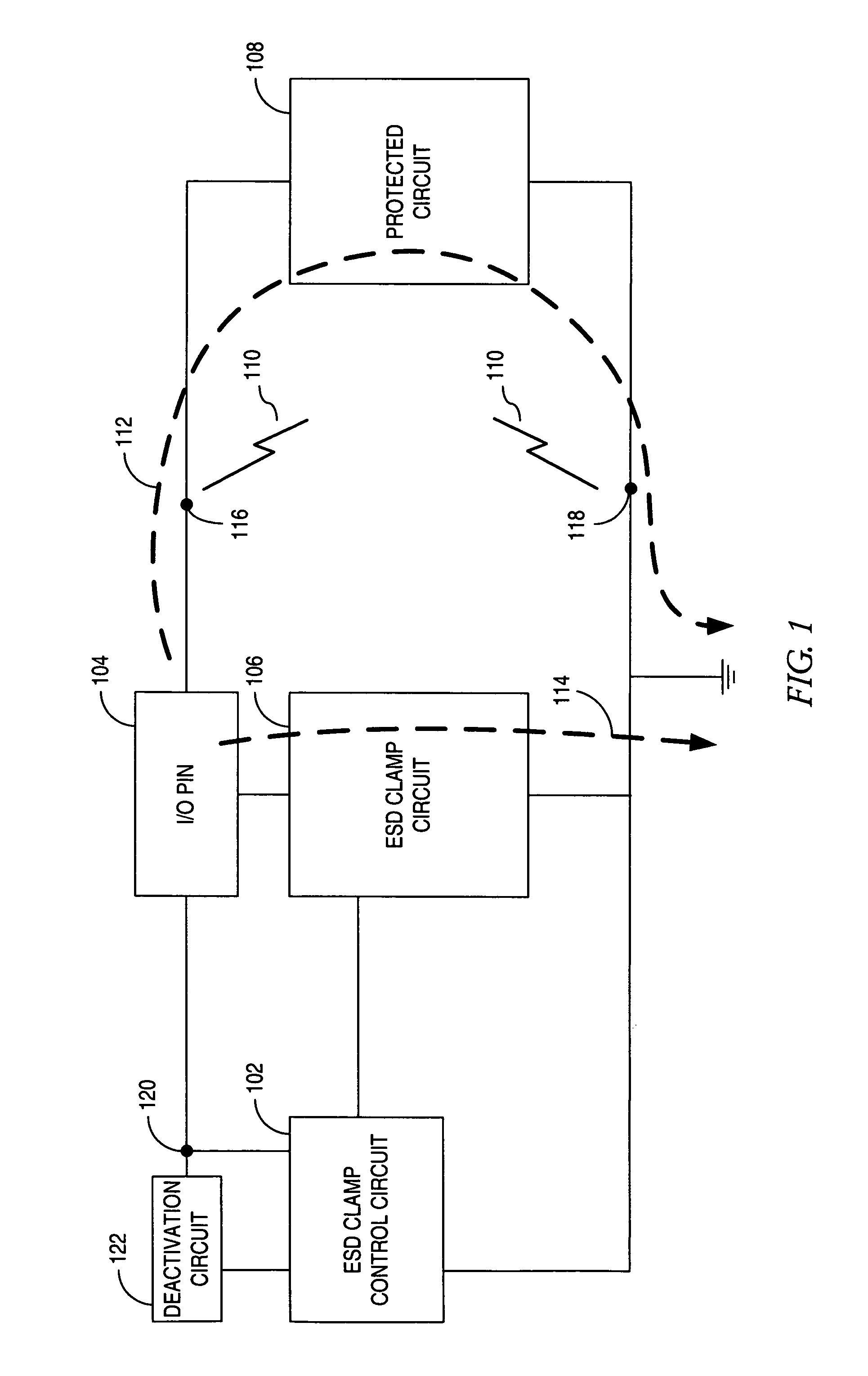Method and apparatus for a floating well RC triggered electrostatic discharge power clamp
a technology of electrostatic discharge and power clamp, which is applied in the direction of pulse techniques, and emergency protective arrangements for limiting excess voltage/current, etc., can solve the problems of localized overheating at the interface, damage to electronic devices, so as to prevent forward biasing of the body diode
- Summary
- Abstract
- Description
- Claims
- Application Information
AI Technical Summary
Benefits of technology
Problems solved by technology
Method used
Image
Examples
Embodiment Construction
[0020]Various embodiments of the present invention are described in terms of an ESD clamp circuit and associated RC control circuitry. The RC control circuitry of one embodiment of the present invention exhibits protection against forward bias of the parasitic, or body, diode that is intrinsic within a resistively coupled transistor. The resistively coupled transistor being used to realize the resistive component of the RC control circuit. Embodiments of an ESD clamp circuit according to the present invention are shown using complimentary P-type Field Effect Transistor (PFET) and N-type (NFET) topologies. Those skilled in the art will appreciate that the invention could be implemented in other circuit topologies, such as bipolar or bi-Complimentary Metal Oxide Semiconductor (biCMOS), circuit topologies.
[0021]Generally speaking, electrostatic charge associated with an object is stored within a capacitance associated with that object and may accumulate to an extremely high potential. ...
PUM
 Login to View More
Login to View More Abstract
Description
Claims
Application Information
 Login to View More
Login to View More - R&D
- Intellectual Property
- Life Sciences
- Materials
- Tech Scout
- Unparalleled Data Quality
- Higher Quality Content
- 60% Fewer Hallucinations
Browse by: Latest US Patents, China's latest patents, Technical Efficacy Thesaurus, Application Domain, Technology Topic, Popular Technical Reports.
© 2025 PatSnap. All rights reserved.Legal|Privacy policy|Modern Slavery Act Transparency Statement|Sitemap|About US| Contact US: help@patsnap.com



